
Pimelia is a genus of darkling beetles in the subfamily Pimeliinae.
George Charles Champion was an English entomologist specialising in the study of beetles. He was born in Walworth, South London, and the eldest son of George Champion.

Tenebrioninae is the largest subfamily of the darkling beetles (Tenebrionidae), containing flour beetles, among others. Tenebrioninae contains more than 20 tribes.
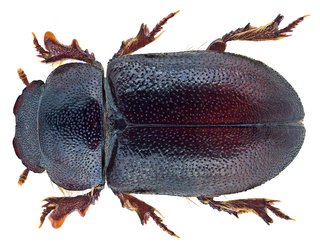
Cheirodes is a genus of darkling beetles in the Melanimini tribe. It was formerly known as Anemia until 1973, when T. J. Spilman determined Anemia to be a synonym of CheirodesGéné, 1839.

Zopherus is a genus of beetles comprising 19 species. They live in the Americas and are adapted to wood-boring.

Epitragini is a tribe of darkling beetles in the subfamily Pimeliinae of the family Tenebrionidae. There are more than 30 genera in Epitragini, found in the North, Central, and South America.

Platydema is a genus of darkling beetles in the family Tenebrionidae. There are at least 60 described species in Platydema.

Uloma is a genus of darkling beetles in the family Tenebrionidae. There are at least 50 described species in Uloma.

Diaperis is a genus of darkling beetle with species known from Asia, Europe, and the Americas. Some species were formerly been placed in the genus Allophasia. A species described in this genus is now Serrania viridula.
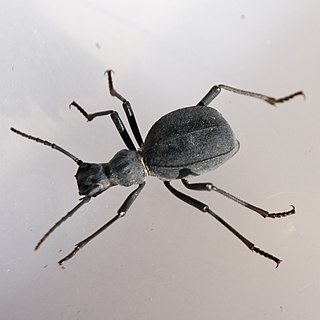
Elenophorini is a tribe of darkling beetles in the subfamily Pimeliinae of the family Tenebrionidae. There are at least three genera in Elenophorini.
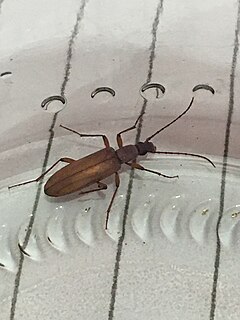
Evaniosomini is a tribe of darkling beetles in the subfamily Pimeliinae of the family Tenebrionidae. There are about eight genera in Evaniosomini, found primarily in the Neotropics.

Nycteliini is a tribe of darkling beetles in the subfamily Pimeliinae of the family Tenebrionidae. There are about 12 genera in Nycteliini, found in the Neotropics.

Pimeliini is a tribe of darkling beetles in the subfamily Pimeliinae of the family Tenebrionidae. There are more than 60 genera in Pimeliini, found primarily in the Palearctic.
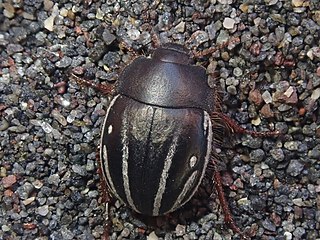
Praociini is a tribe of darkling beetles in the subfamily Pimeliinae of the family Tenebrionidae. There are about 15 genera in Praociini, found in the Neotropics.

Stenosini is a tribe of darkling beetles in the subfamily Pimeliinae of the family Tenebrionidae. There are more than 40 genera in Stenosini.

Tentyriini is a tribe of darkling beetles in the subfamily Pimeliinae of the family Tenebrionidae. There are more than 90 genera in Tentyriini.
Thinobatini is a tribe of darkling beetles in the subfamily Pimeliinae of the family Tenebrionidae. There are at least two genera in Thinobatini, found in the Neotropics.
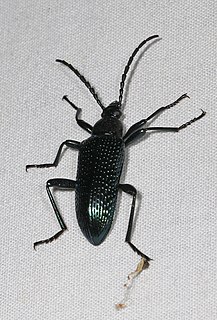
Praeugenini is a tribe of darkling beetles in the family Tenebrionidae. There are about seven genera in Praeugenini, found in tropical Africa.

Platyscelidini is a tribe of darkling beetles in the family Tenebrionidae. There are about eight genera in Platyscelidini.

















